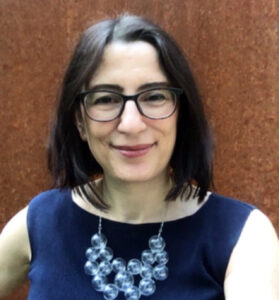
Molinero is the Jack and Peg Simons Endowed Professor of Theoretical Chemistry and the director of the Henry Eyring Center for Theoretical Chemistry. She is a theoretical chemist and uses computer and statistical models to explore the science of how crystals form and how matter changes from one phase to another down to the atomic scal
Valeria Molinero, distinguished professor of chemistry, and Erik Jorgensen, distinguished professor at the School of Biological Sciences, were elected May 3 as members of the National Academy of Sciences. Both are faculty members in the U’s College of Science.
Molinero and Jorgensen are among 120 U.S. scientist-scholars and 30 foreign associates elected at the Academy’s Annual Meeting in Washington, D.C. They join 15 other current University of Utah researchers who’ve been elected to the Academy. The National Academies, which also include the National Academy of Engineering and National Academy of Medicine, recognizes scholars and researchers for significant achievements in their fields and advise the federal government and other organizations about science, engineering and health policy. With today’s elections, the number of National Academy of Sciences members stands at 2,512, with 517 foreign associates.
Past and present U researchers in the National Academies
Below are lists of current or former University of Utah faculty elected to one or more of the National Academies. Note that some were elected before or after their tenure at the university, and that some have died since their election.
National Academy of Sciences: Brenda Bass, Cynthia Burrows, Mario Capecchi, Dana Carroll, Thure Cerling, James Ehleringer, Kristen Hawkes, James O’Connell, Baldomero “Toto” Olivera, C. Dale Poulter, Peter J. Stang, Wesley Sundquist, Polly Wiessner, Henry Harpending, Jesse D. Jennings, Cheves Walling, Sidney Velick, John R. Roth, Josef Michl, Ray White, Julian Steward, Jeremy Sabloff, Henry Eyring and Louis Goodman and Mary C. Beckerle.
National Academy of Engineering: Jindrich Kopecek, R. Peter King, Adel Sarofim, Sung Wan Kim, Gerald Stringfellow, Donald Dahlstrom, George Hill, Jan D. Miller, Milton E. Wadsworth, Thomas G. Stockham, John Herbst, Stephen C. Jacobsen, Willem J. Kolff, Alex G. Oblad, Anil Virkar and William A. Hustrulid.
National Academy of Medicine: Mario Capecchi, Wendy Chapman, Sung Wan Kim, Vivian Lee, Baldomero “Toto” Olivera, Stephen C. Jacobsen, Eli Adashi, Paul D. Clayton and Homer R. Warner.
